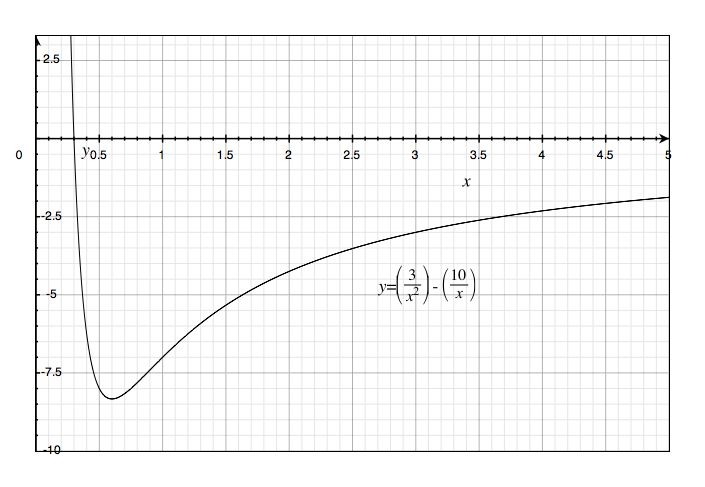One More Example of Small Oscillations
What is the frequency for small oscillations of a mass m about the minimum of the potential U(r) = a/r ² - b/r ?

An example of this potential for a=3 and b=10 is displayed above. First, find the minimum of the potential.
thus rmin = 2a/b. The value of the potential at this minimum is U(rmin) = b ²/4a - b ²/2a = -b ²/4a.
Second, to determine the frequency for small oscillations, we need the second derivative of U at the minimum.
The second derivative is positive, so this is a position of stable equilibrium. In the small amplitude approximation, this is the equivalent of k, giving